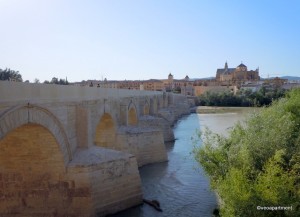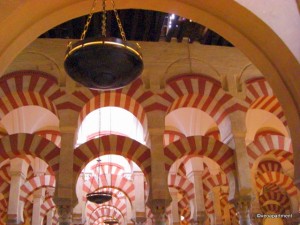About an hour and a half away from Seville by train, Cordoba is one of Spain’s great old cities, once the capital of Moorish al-Andalus and regarded as one of the most enlightened, sophisticated cities of the European Middle Ages. It was a place where Moslems, Jews and Christians lived for the most part harmoniously, creating a cultured, intellectual life that was not to be equalled again for many centuries. It’s famous above all for the Mezquita, the Grand Mosque of the Caliphs of Cordoba, but away from the monumental area it is also a city for people, and one of its most captivating aspects is that it is a city of flowers.
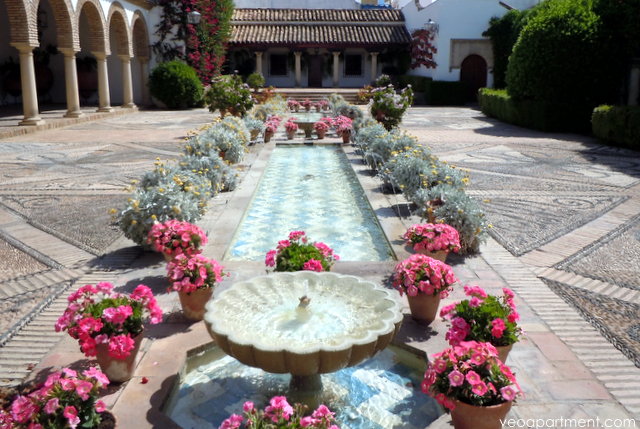
This is best shown by the festival of the Patios of Cordoba, which is held every May, when the private patios of many buildings, with their plants and fountains, are opened to the public, but streets adorned with the typical blue flower pots of the city are common all year round. In the spring and summer months they are alive with flowers and I love to visit the city at this time of year to enjoy its colours and smells.
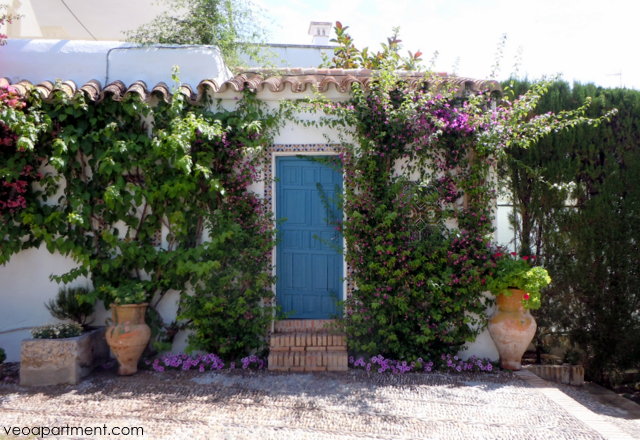
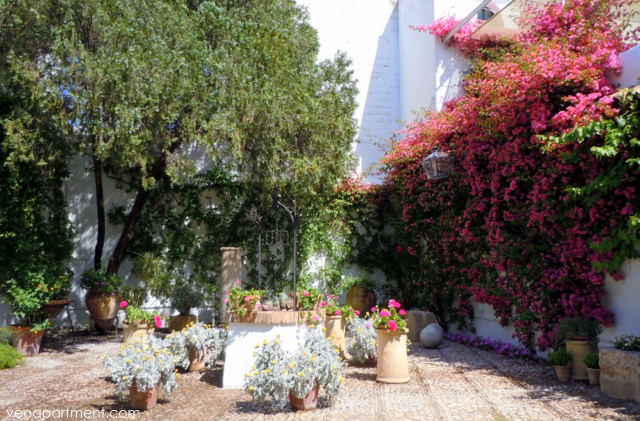
Not surprising, then, that one of my favourite places to go in Cordoba is the Palacio Viana, also known as the patio museum. Now about 500 years old, it originally belonged to the Marqueses de Villaseca, and acquired its modern name when it was bought by the Marquis of Viana in the late 19th century. It was eventually sold to the CajaSur foundation in 1982, and turned into a museum. From relatively small beginnings it has grown over the centuries by buying up surrounding properties, and now boasts no fewer than 12 patios, as well as the main garden.
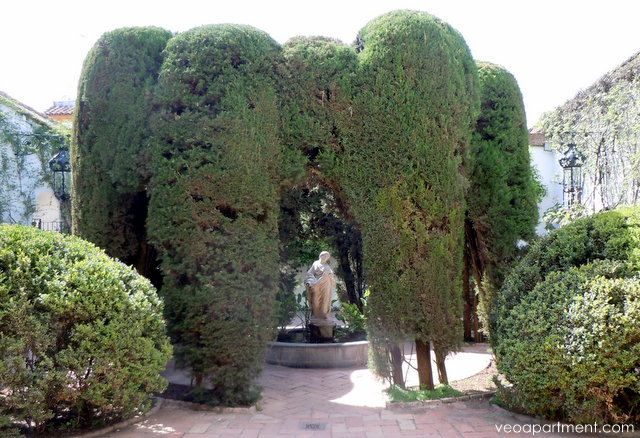
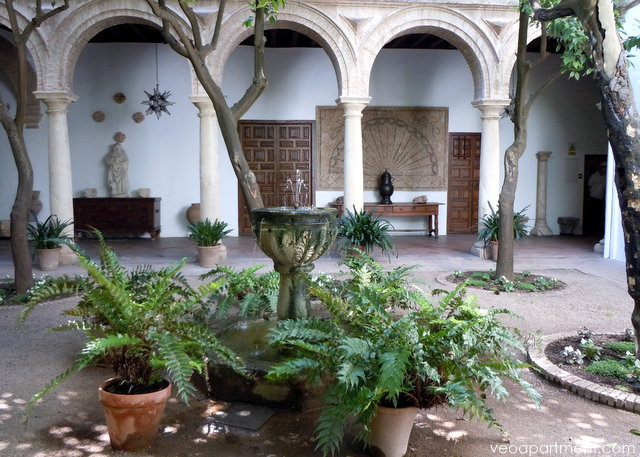
The modern grand entrance into the Patio de Recibo was built to impress visitors with the wealth and power of the owners, and features a colonnade around the perimeter. To one side is the carriage house, where you can see the Marquis’s carriage and (a personal favourite) a sedan chair, which looks really heavy for four men to carry! From here you go into the older parts of the palace. The little Patio de Los Gatos, or courtyard of the cats, will certainly charm you as it always charms me. In mediaeval times it was a Patio de Vecinos (neighbours), where the common people lived, and to one side is the palace kitchen of the early 20th century.
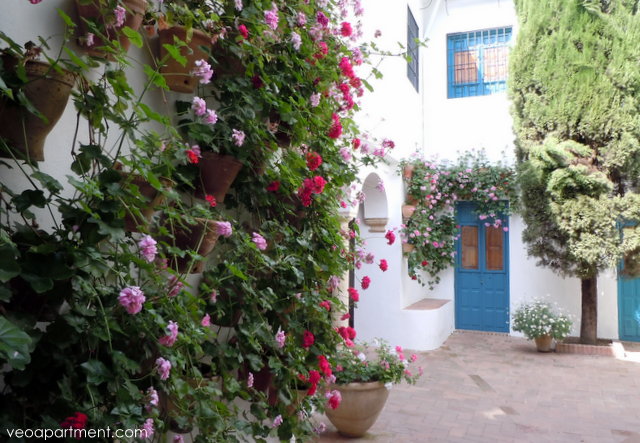
Beyond that are the Patio of the Oranges (a Moorish style garden), the Patio de las Rejas, which means bars or gratings, which gets its name from the bars that separate it from the street, and allowed those outside to look enviously at those inside, and the Patio de La Madama (the lady of the house), perhaps the most picturesque of all the courtyards.
The two largest spaces come next. The Courtyard of the Columns is a modern addition, but its fountains blend harmoniously with the older elements. It is used for events such as concerts and theatre. Alongside is the garden, with a formal area of low, square hedges around a central fountain and a grand oak tree. The two interior patios, the Courtyard of the Chapel and the Courtyard of the Archives, are the quietest and most tranquil. Finally, you come to the courtyards where the gardeners worked, and stored their tools. These include the Courtyard of the Well, which was fed from an underground stream, and provided enough water for all the patios.
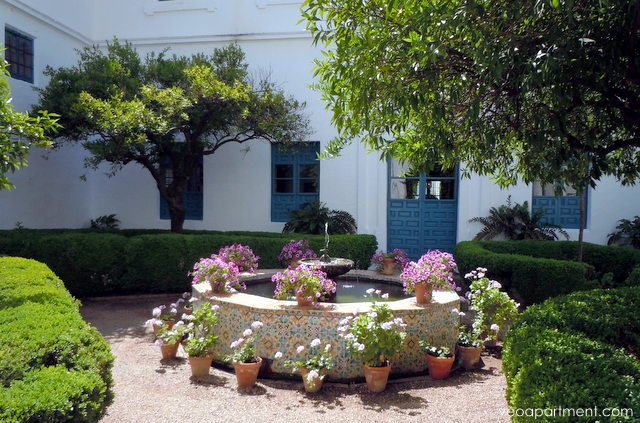
You can also take a guided tour of the inside of the palace, though admission is extra, and see the living quarters of the aristocratic owners and their collections of art and books, and other historical items.
Although it’s outside the main monumental area, I always try to make time to come here when I’m in Cordoba, and I think you should, too. I don’t know anywhere else that’s quite like it.
Palacio Museo de Viana
Plaza de don Gome, 2
Tel: 957 496 741
Tues-Sat 10.00 am to 7.00 pm Sundays 10.00am to 3.00 pm Closed Mon
July and August 9.00 am to 3.00 pm Closed Mon
Price 5 euros to the patios, 8 euros with entrance to the palace.
Website
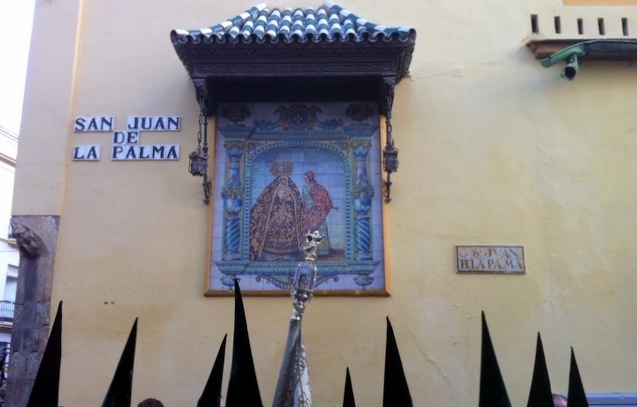 the Macarena procession in Seville
the Macarena procession in Seville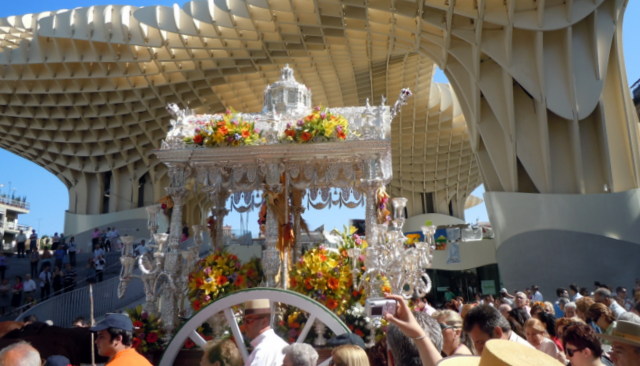 the Seville brotherhood leaving for El Rocio
the Seville brotherhood leaving for El Rocio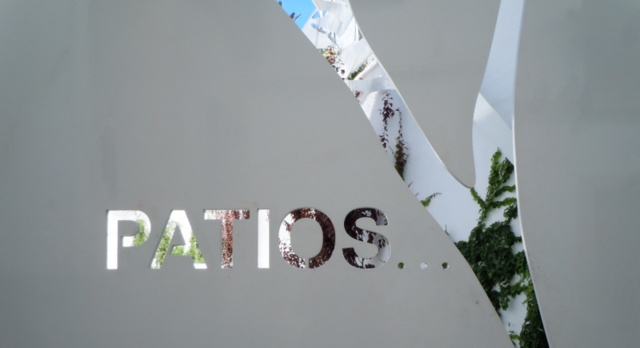 the Patios of Cordoba
the Patios of Cordoba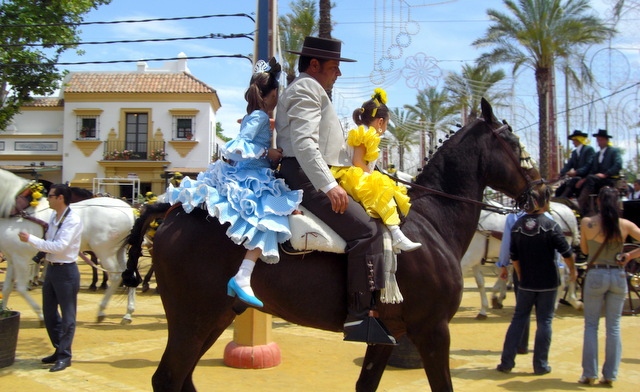
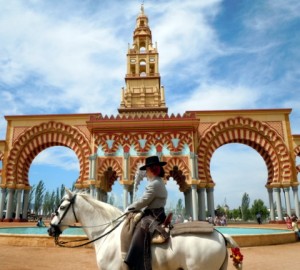 Córdoba
Córdoba